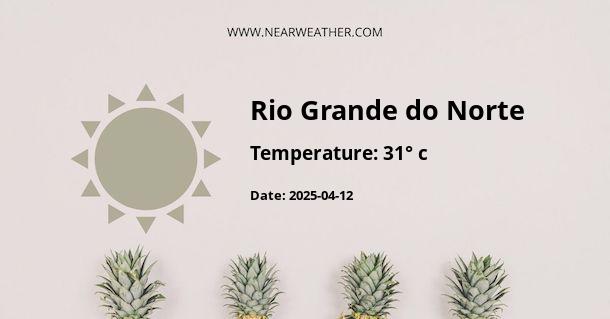Climate and Weather in Rio Grande do Norte, Brazil
Rio Grande do Norte is located in the northeastern region of Brazil, and it is known for its diverse climate and weather patterns. From its beautiful coastline to its inland areas, the state offers a range of climates that cater to different preferences. Understanding the climate and weather in Rio Grande do Norte is important for anyone planning to visit or settle in the region.
Overview of Rio Grande do Norte's Climate
Rio Grande do Norte has a tropical climate, with high temperatures and distinct wet and dry seasons. The state experiences a hot and humid climate along the coast and a semi-arid climate in the inland areas. The temperature and precipitation variations throughout the state make it a unique and interesting place to explore.
Temperature in Rio Grande do Norte
The average annual temperature in Rio Grande do Norte ranges from 25°C to 30°C (77°F to 86°F). The coastal areas generally have slightly lower temperatures due to the influence of the Atlantic Ocean, while the inland areas can experience higher temperatures, especially during the dry season.
The hottest months in Rio Grande do Norte are usually from September to February, with average high temperatures reaching 30°C to 32°C (86°F to 90°F). The cooler months, from March to August, see average high temperatures of 28°C to 29°C (82°F to 84°F).
Rainfall in Rio Grande do Norte
Rio Grande do Norte experiences distinct wet and dry seasons. The rainy season typically starts in February and lasts until July, while the dry season extends from August to January. The coastal areas receive more rainfall compared to the inland regions.
Annual rainfall in Rio Grande do Norte ranges from 400mm to 800mm (15.7 inches to 31.5 inches). The coastal areas receive higher rainfall, while the interior regions experience drier conditions, characteristic of a semi-arid climate.
Extreme Weather Events
Like many regions in Brazil, Rio Grande do Norte is prone to extreme weather events such as tropical storms and hurricanes, especially along the coastline. These events can bring heavy rainfall and strong winds, impacting the local communities and infrastructure.
Best Time to Visit Rio Grande do Norte
The best time to visit Rio Grande do Norte depends on individual preferences. For those who enjoy warmer temperatures and water activities, the period from September to February is ideal. However, for travelers who prefer milder temperatures and less humidity, the months from March to August offer a more comfortable experience.
Climate Variations Across Different Regions
Rio Grande do Norte's climate varies across its different regions. The coastal areas, including popular destinations like Natal and Pipa, have a more tropical and humid climate, while the inland areas, such as Mossoró and Caicó, experience drier conditions due to their semi-arid climate classification.
Conclusion
Overall, Rio Grande do Norte offers a diverse climate and weather experiences throughout the year. Whether you prefer coastal breezes, tropical temperatures, or the unique landscapes of semi-arid regions, Rio Grande do Norte has something to offer for everyone.
A - Rio Grande do Norte's Latitude is -5.750000 & Longitude is -36.000000.
A - Weather in Rio Grande do Norte is 31° today.
A - Climate Conditions in Rio Grande do Norte shows overcast clouds today.
A - Humidity in Rio Grande do Norte is 58% today.
A - Wind speed in Rio Grande do Norte is 10.58 km/h, flowing at 88° wind direction. today.
